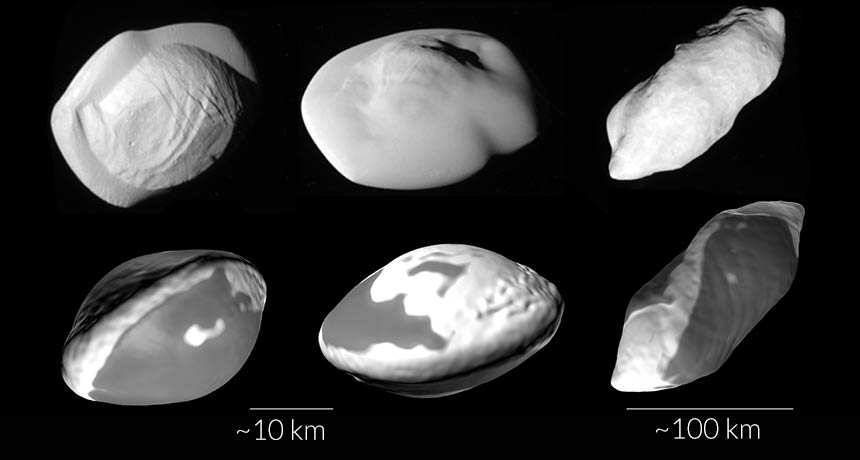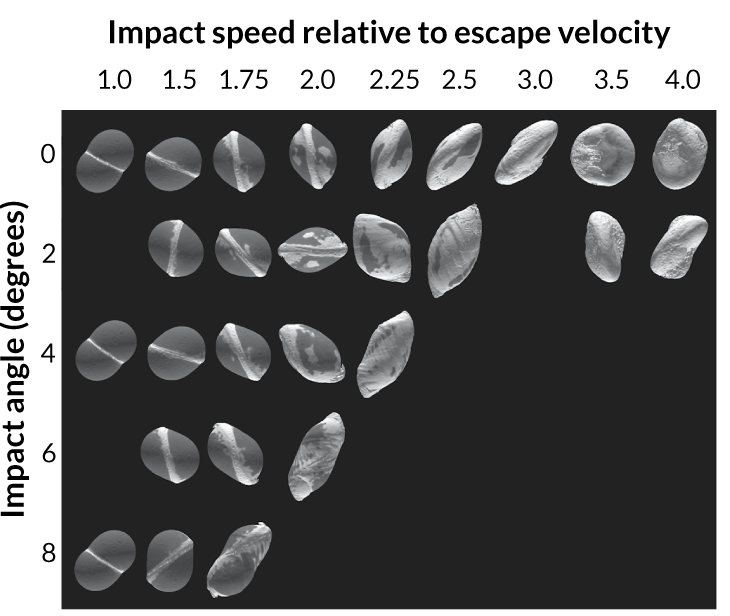Satellite smashups could have given birth to Saturn’s odd moons
Weird moons orbiting the ringed planet might have been forged from head-on collisions

SPITTING IMAGE Simulated collisions between two moonlets can lead to oddly shaped moons (bottom row) that closely resemble some of Saturn’s moons (top row; from left to right: Pan, Atlas and Prometheus).
Images: JPL-Caltech/NASA, Space Science Institute; Simulations: A. Leleu, M. Jutzi and M. Rubin/Nature Astronomy 2018








